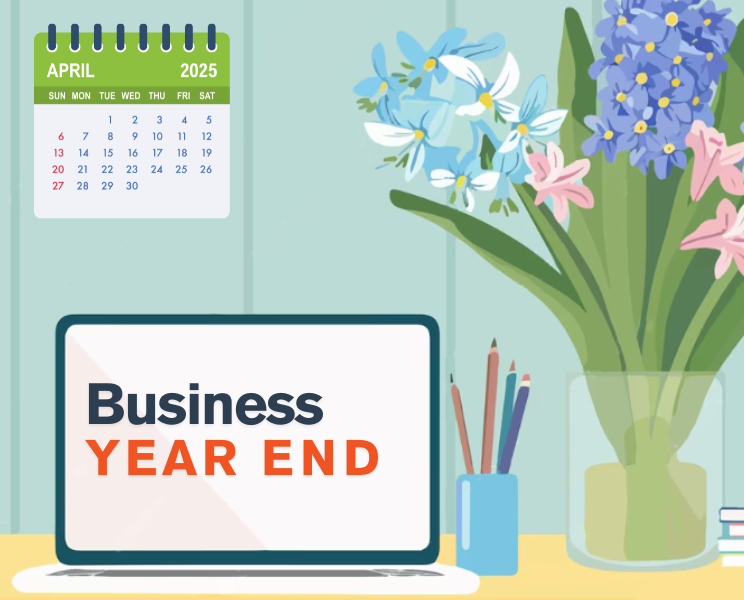What is the Flat Rate VAT Scheme and What are the Benefits?
Introduction
The flat rate VAT scheme is designed as a simplified way of recording, reporting, and paying VAT liabilities for small VAT registered entities. However, because liabilities payable under a flat rate scheme are calculated very differently to those calculated under a regular scheme, careful consideration should be given before a decision is made about whether to join.
Who can use the flat rate scheme?
Any VAT registered business that expects its VAT taxable turnover to be less than £150,000 in the next 12 months, providing they have not joined or are not eligible to join a VAT group in the last 24 months, can use the flat rate scheme. See “What else do I need to consider?” (below) regarding the thresholds at which you must leave the scheme.
What are the practical benefits?
Under a normal VAT registration, VAT is collected from your customers (normally at a rate of 20% of the net sale price of your goods or services) and paid to your suppliers. The difference between the amount you’ve collected from your customers and the amount you’ve paid to your suppliers is then paid over to HMRC, usually on a quarterly basis. So far so simple then, but in reality, many of your purchases (travel on public transport, cold takeaway snacks, milk for the office, books & purchases from suppliers who aren’t VAT registered to name but a few) won’t include VAT or could include VAT at a different rate (electricity bills often include VAT at 5% for example). Under the regular scheme, you need to make sure that you accurately record and report the VAT treatment of every single purchase and then add them all up together to declare to HMRC. Under the flat rate scheme, you can pretty much completely ignore the VAT treatment of your purchases, other than capital items over a certain value (see “What are the potential financial benefits?” below). Instead, you just take your gross sales value for the period and multiply it by a flat rate percentage based on your industry sector (see appendix one of this report) and this will be the amount you pay over to HMRC. The difference between this and the amount you have collected from your customers is your compensation for VAT suffered on your purchases.
What are the potential financial benefits?
Clearly the more costs your business incurs that include VAT, the less likely it is that the flat rate scheme will be financially beneficial, although the industry specific percentages (see appendix one) do attempt to address that issue. “Pubs” for example have a flat rate of 6.5% on the understanding that they will need to purchase large volumes of alcoholic drinks for resale –all of which would normally be subject to 20% VAT. However, let’s say for example that you provide management consultancy services (flat rate 14% from table below). You work from home (so no rent), travel by public transport (which is exempt from VAT) and eat sandwiches at your desk (zero rated for VAT). It’s possible then that the only VAT you’re likely to incur is on some stationery costs and on your accountancy fees.
Furthermore, the following two points should be considered:
1. If this was the first year of VAT registration then you would also receive a 1% discount on your flat rate percentage making the savings even greater
2. If you purchase a “capital good” for the business (e.g. a laptop computer) with a value (including VAT) of more than £2,000 then you can claim the VAT back on that purchase even if you are on the flat rate scheme at the time.
What else do I need to consider?
As already stated, you would need to carefully consider your current and future situation before deciding whether to join the flat rate scheme and at what point you would want to do so (you don’t have to join immediately upon registration for VAT). However, there are several other nuances of the scheme that you would need to be aware of both before deciding to join and whilst using it. These include:
- The 1% discount on your flat rate only applies to the first year of VAT registration (not the first year after joining the flat rate scheme) so if for example you registered for VAT on 01/01/14 but then didn’t join the flat rate scheme until 01/07/14 you would only receive the 1% discount for 6 months up until 31/12/14
- You can voluntarily leave the scheme at any point (by writing to HMRC) but you are then excluded from re-joining for the next 12 months
- You must leave the scheme immediately if on any anniversary of joining, your turnover in the last 12 months was more than £230,000. Importantly it must be considered that the £230,000 leaving threshold (unlike the joining one) must be calculated including VAT and also including sales exempt from or outside the scope of VAT
- It’s often difficult to determine what industry sector your business falls under, and so what flat rate percentage it can use. It’s important that you can show that you’ve given due consideration to this decision at the point that you make it to avoid the risk of HMRC challenging the rate used and forcing you to backdate any change.
Limited Cost Businesses
The flat rate scheme isn’t that simple. In 2017 a rule was added that states that if you’re a limited cost business, you should use the flat rate of 16.5%. You are a limited cost business if the amount you spend on relevant goods including VAT is either:
- less than 2% of your VAT flat rate turnover
- greater than 2% of your VAT flat rate turnover but less than £1,000 a year
If your return is less than one year the figure is the relevant proportion of £1,000. For a quarterly return is £250.



